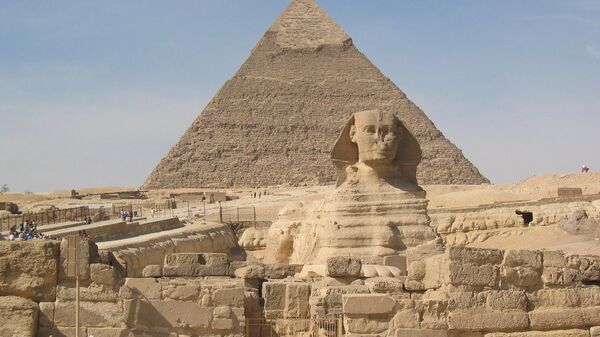While archaeologists ponder on what mysteries might be concealed beneath the famous ancient Egyptian monument known as the Great Sphinx of Giza, a new theory suggests that an underground cavity located below the landmark might lead the way to the treasure of a legendary pharaoh, the Daily Express reports.
According to the newspaper, historian Bettany Hughes speculated that the two chambers that were found underneath the Sphinx could be linked to the secrets of Khufu, the Fourth Dynasty pharaoh who commissioned the Great Pyramid of Giza, which is located nearby.
"Generations of ancient Egyptians came to respect and fear this otherworldly creature, really believing that it had supernatural powers. And the fascination with the Sphinx shows no sign of letting up", she told the viewers of her new TV show called "Egypt’s Greatest Treasures." "Archaeologists are investigating under the statue because there are tantalising clues that the Sphinx sits right on top of a network of chambers and tunnels," she added.
Pointing at the presence of "a deep hole near the Sphinx’ tail" which is "thought to be connected with a large chamber beyond", as well as at the existence of a smaller chamber located underneath the Sphinx’s paws, Hughes admitted that it’s too early to tell where these tunnels ultimately lead, noting that they might be linked to Khufu, whose pyramid, the Great Pyramid of Giza, is located nearby.
"The truth is, we have absolutely no idea what these were used for, but it’s a mystery that researchers are currently trying to solve. And some are hopeful that these hidden tunnels may lead us to new, undiscovered treasures." she noted.
Earlier this year, historian Matt Sibson argued that an ancient stele that was previously located in front of the Sphinx but was removed from there in the 19th century might hold the key to discovering what wonders this monument hides beneath its bulk.



